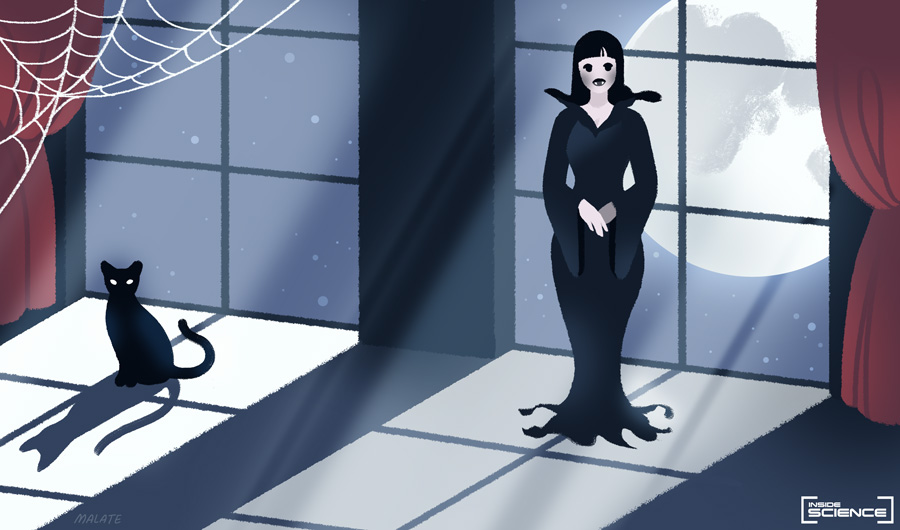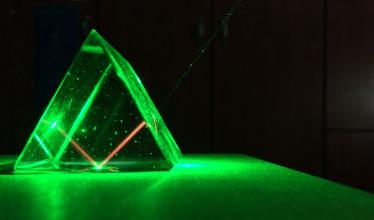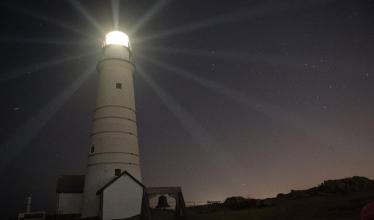(Inside Science) -- Legends and folklores often bend the laws of physics, but every once in a while, reality is equally fantastical. Three years ago, a group of scientists from Russia and Canada discovered that they could manipulate light without changing it in the way they expected. They compared this phenomenon to the way some vampires don’t cast shadows, and coined it the "quantum vampire" effect.
Now, another research paper is claiming that the "quantum vampire" effect is not limited to the quantum realm, but can also be found in the classical world. (No, not classical as in ancient Latin literature, but classical in the sense that the effect isn’t exclusively quantum.) Don’t let the scientific jargon spook you -- keep reading to find out what they actually mean, if you dare!
A light that casts no shadow
Just like many aspects of quantum physics, the original "quantum vampire" discovery may seem counterintuitive or even eerie to some. In short, the scientists found that when two beams of light were in the same mode, meaning they shared a set of characteristics, if one photon is removed from one of the two beams, there is no way for an observer to tell which beam it was removed from. The analogy is as if a vampire walks into a spotlight, and instead of casting a silhouette on the stage floor, the entire spot just becomes dimmer. Pretty odd, right?
Then came the new paper, published in the journal Optica this year. The new group discovered that this ghostly effect can also be achieved using what they called a "classical thermal state of light." To generate it, they used a beam splitter to chop a single laser beam in two. In contrast, the original research used a special crystal to generate entangled photon pairs of "quantum light." According to Konstantin Katamadze, a physicist from Moscow State University in Russia and a co-author of the paper, this means that the effect should be understood in a slightly different way. The title of the new paper -- "How quantum is the 'quantum vampire' effect?" -- drew some contesting comments from the authors of the original paper.
"That wasn't even the main point of our paper," said Alexander Lvovsky, a physicist from the University of Calgary in Canada and a co-author of the original 2015 paper. "But actually, I'm not too bothered by the polemics, you know -- it does make the discussion more exciting. I do think that it is a nice paper, because it extends the effect to thermal states, which is very important."
Bring the quantum vampire into the real world
"Quantum states of light are difficult to prepare, and if we can repeat some technique with classical states, this technique becomes more accessible," Katamadze wrote in an email to Inside Science. For example, ghost imaging is another spooky optical effect with both quantum and classical variants. It can build an image in part using light that never interacts with the object it is imaging and is now being considered for real-world applications such as imaging in low light environments and imaging light-sensitive biological samples.
"Quantum ghost imaging was introduced in 1995, but ten years later it was shown that it can be also done with classical thermal states of light, which is much more easy to prepare," Katamadze wrote. He hopes that their revelation on the quantum vampire effect can similarly stoke interest in further research.
"The quantum vampire effect provides a way to make a measurement that doesn't leave the kind of trace you might expect, even though it does disturb the state [of the photons] in other ways," said Aephraim Steinberg, a quantum physicist from the University of Toronto who didn't take part in either project. Scientists may need to rethink how these newly discovered effects can be applied, such as by someone eavesdropping on quantum communications. Although the eavesdropping would still be detectable, it might not be in the way researchers are expecting.
Steinberg further explained that even though the new discovery is somewhat surprising, it doesn't contradict any of the general operating principles of quantum information technologies. This is good news for the large-scale projects that have already invested billions of dollars into quantum information technologies, such as quantum computers and the recently launched quantum communication satellite, Micius.
"The effect itself really is a fascinating one," said Steinberg, not taking sides between the two papers. "I don't think we need to see it as a fight over whether something is quantum or not."





